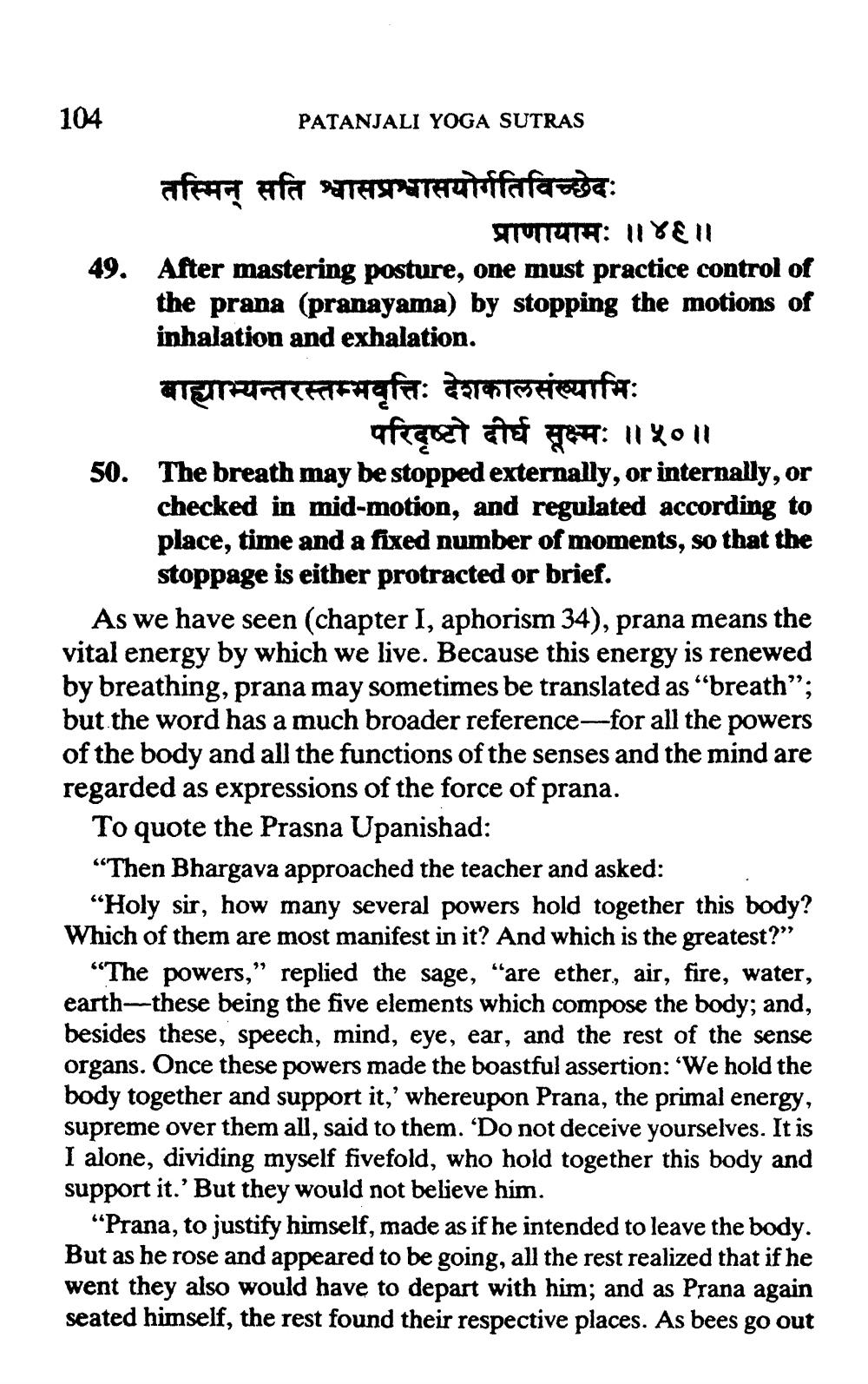________________
104
PATANJALI YOGA SUTRAS
तस्मिन् सति श्वासप्रश्वासयोर्गतिविच्छेदः
T UTA: 118E11 49. After mastering posture, one must practice control of
the prana (pranayama) by stopping the motions of inhalation and exhalation. बाह्याभ्यन्तरस्तम्भवृत्तिः देशकालसंख्यामिः
परिदृष्टो दीर्घ सूक्ष्मः ॥५०॥ 50. The breath may be stopped externally, or internally, or
checked in mid-motion, and regulated according to place, time and a fixed number of moments, so that the
stoppage is either protracted or brief. As we have seen (chapter I, aphorism 34), prana means the vital energy by which we live. Because this energy is renewed by breathing, prana may sometimes be translated as “breath”; but the word has a much broader reference-for all the powers of the body and all the functions of the senses and the mind are regarded as expressions of the force of prana.
To quote the Prasna Upanishad: “Then Bhargava approached the teacher and asked:
"Holy sir, how many several powers hold together this body? Which of them are most manifest in it? And which is the greatest?"
“The powers,” replied the sage, "are ether, air, fire, water, earth-these being the five elements which compose the body; and, besides these, speech, mind, eye, ear, and the rest of the sense organs. Once these powers made the boastful assertion: 'We hold the body together and support it,' whereupon Prana, the primal energy, supreme over them all, said to them. “Do not deceive yourselves. It is I alone, dividing myself fivefold, who hold together this body and support it.' But they would not believe him.
“Prana, to justify himself, made as if he intended to leave the body. But as he rose and appeared to be going, all the rest realized that if he went they also would have to depart with him; and as Prana again seated himself, the rest found their respective places. As bees go out




